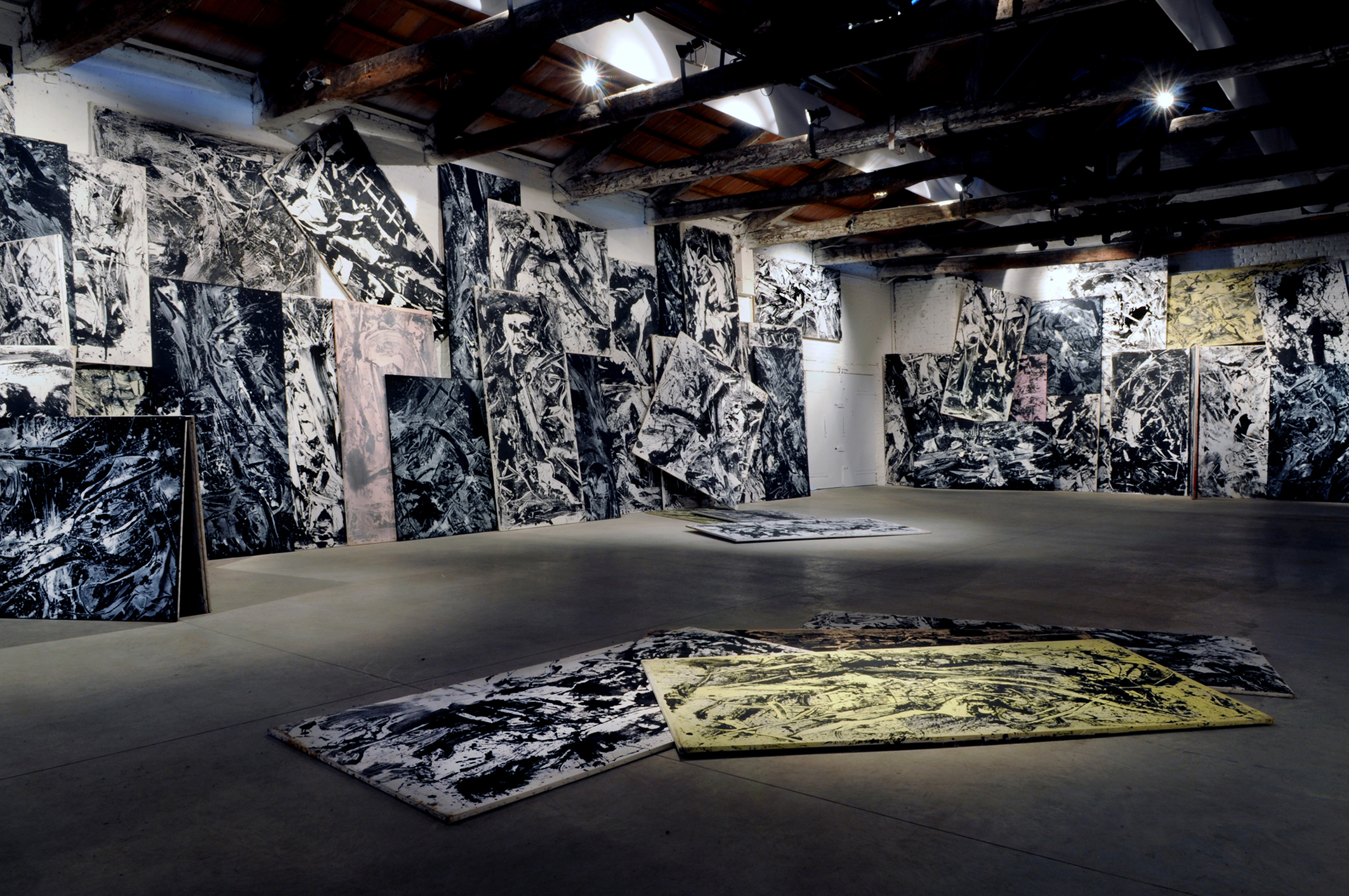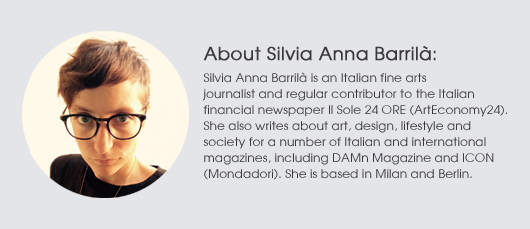
VENICE – Born in Venice in 1919, Emilio Vedova began his career as a self-taught artist in the 1930s. In 1942, he joined the anti-fascist movement “Corrente,” and during the war he took part in the resistance. In 1946, he signed the “Beyond Guernica” manifesto, according to which painting had to go over to figuration.
Vedova was, in fact, one of the great protagonists of Informal Art and supported the revolutionary power of painting, gesture and abstraction. In 1948, he participated for the first time in the Venice Biennale, where he regularly returned in the following years, getting important awards such as the Grand Prize for painting at the Venice Biennale in 1960 and the Golden Lion for Lifetime Achievement at the Venice Biennale in 1997.
Already in his lifetime his value was recognized. Among his supporters was Peggy Guggenheim, whom he met in 1947 in Venice and who became a collector of his work. Those paintings are preserved today at the Peggy Guggenheim Foundation in Venice, as well as in various museums around the world, including the MoMA in New York. His American adventure began in 1951 with a solo show at the Viviano Gallery in New York. This first exhibition was followed by others, through which Vedova built close relations with the American art scene. His name was known not only as painter, but also as a thinker and as a teacher thanks to various lectures that he gave at American universities.
“On these occasions Vedova spoke about his theory of a painting that breaks the rules, a gesture that brings the painting to the limit,” said gallery owner Massimo Di Carlo from Verona-based Galleria dello Scudo. “But in reality, his brush strokes that look like random slashes were deeply controlled. Even before he started, he had the whole picture in his head.”
Vedova’s career was international. He had exhibitions not only the United States but also in Brazil, where he participated already in the second São Paulo Biennale in 1954 and won a prize that allowed him to spend three months in Brazil. In Germany, Vedova realized between 1963 and 1964 the cycle Absurdes Berliner Tagebuch, and was present at Documenta in Kassel in 1955, in 1959, in 1964 and in 1982.

“His fortune is old and was earned on the field,” Di Carlo said, “but from the second half of the 1990s until today, there has been a wave of speculation that has enhanced the contemporary art while moving to the background some great masters, especially from Europe. Now things are changing.” An example of this re-evaluation is the presence of Emilio Vedova at Art Basel 2015 in the Art Unlimited section with an installation made of paintings titled … in continuum, presented by the Galleria dello Scudo. It is a series of 102 paintings made between 1987 and 1988 in which painting constantly renews itself, it fills the spaces and engages with the viewer.

“Among the most sought-after works on the market there are the paintings of the 1960s, produced between Europe and the United States, and those of the 1980s,” Di Carlo said. “In the 1970s he devoted himself mainly to engraving. In those years some important cycles of political inspiration were created, such as the Spain Cycle, the cycle To the American students, and Cuba yes. He was a skilled engraver and has experienced several techniques.”
The 1980s, instead, are the years of the great round paintings, painted on both sides and with a diameter of almost three meters. “It is a very aggressive painting, very popular in Northern Europe and especially in Germany,” Di Carlo said. Vedova’s works are preserved in the Neue Nationalgalerie’s collection in Berlin, while the Berlinische Galerie dedicated to Vedova a major retrospective after his death, in 2006.
In 2006, the year of his death, a foundation dedicated to Vedova’s work was created in Venice, as the artist had wished. Every year, it shows Vedova’s work next to that of other great artists, like Anselm Kiefer, Roy Lichtenstein and Alexander Calder. Also Austrian gallery Thaddaeus Ropac – which has represented Vedova’s legacy since May 2015 – placed the work of the Venetian artist in dialogue with another great master of contemporary art, Georg Baselitz, who was his friend and admirer.
“Also in the United States Emilio Vedova begins to be appreciated again,” Di Carlo said. “After the good fortune of the 1960s and 1970s, he was set aside because of the cultural policies: the American Abstract Expressionists were favored, while Vedova’s work is strongly linked to the Italian culture, and especially to Venice, to the extreme gesture of Tintoretto and Titian and to the vorticism of Futurism and Boccioni. Today we look at the content, thus Vedova receives the proper attention that a great European master deserves.”

Prices for works by Vedova at Galleria dello Scudo are about €600,000 to €700,000 for a large painting from the 1960s (1.2 x 2 m), and around €400,000 for the paintings from the 1980s (2.35 x 2.35 m). The large round paintings are very rare; the ones painted on the front and on the back in the 1980s cost around €700,000 to €800,000.
Works on paper from the 1960s (100 x 70 cm) cost around €80,000 to €100,000, while the ones from the 1980s cost around €60,000 to €70,000. The black and white works from the “De America” cycle, dated 1976 to 1977, are rare; measuring 2 x 2 meters. They cost €300,000 to €350,000. Engravings (50 x 70 cm and 70 x 10 cm) start at €2,000.
By SILVIA ANNA BARRILA


